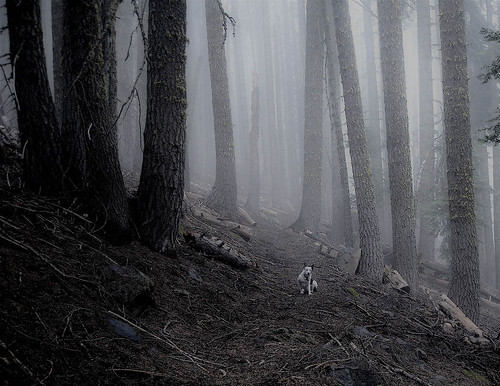
The perfect metaphor for the need to be still when wading through lots of research! (Photo by Flickr user ex_magician)
At this time last week, I was feeling overwhelmed by the amount of content I had and the possible directions I could go with it. A handful of people answered my call for submissions by sending in photographs of the “interesting” physical elements of their subway commutes. When I combined their photos with mine, I was happy to over one hundred examples at my disposal, creating a sort of rough database of perceptions in transit. Yet, staring at this mass, I felt that I had no clear next steps and worse, I felt that I had less of an idea of what my project was going to accomplish. My initial call and proposal highlighted “blind spots” as the key focus of my project and I deliberately let interpretations remain open for how the concept should lead their perceptions and photos. What I received in return was a mélange of very interesting photographs, but very few that matched what I had done.
This caused a lot of concern, but I realized that I needed to step away from my content and concept and try to look objectively at what I had in front of me, not what I hoped would exist. Three questions were essential to that process:
-What exactly do I have?
-What connections exist among the content I have?
-How does what I have make me approach my concept differently?
Over the course of the week, grouping my photographs into the most basic categories (station, train, tracks, art, decay, etc.) helped me realize that what I have is an exercise in what people look for to uniquely identify locations. As I approached my trip to the transit museum archives (to be reviewed in separate post), I was able to focus on what I wanted to gain from the trip. I wanted to understand how subway stations have acted as media within their own right. Since the very beginning of the subway in 1904, stations have used symbols as the key features of a visual communications system for passengers to locate themselves in an underground world.
Thinking of “What is the predecessor?” as the central question to media archaeology, I now understand my project to be more than just a collection of interesting “blind spots” in the subway. It is a documentation of the historical link between design intent and design receipt that asks, do we see what the architects and designers of the stations wanted us to see? Why or why not? What’s changed? What’s remained the same? And what observations come from this process of documentation?
I feel much more comfortable knowing my work is grounded in history. I highly recommend the act of “stepping away” for any researchers that encounter conceptual blocks or feelings of being overwhelmed by lots of “stuff” but no clear way out of the woods.
One Comment
1 shannon wrote:
I’m very familiar with that feeling of complete overwhelmption; it’s not a comfortable place to be! But, as we talked about in class last week, when you step back, take a break from the material, then return with fresh eyes, the material can sometimes seem to “speak to you.” I’m excited to hear how this new organizational scheme helped to structure your visit to the Transit Museum!